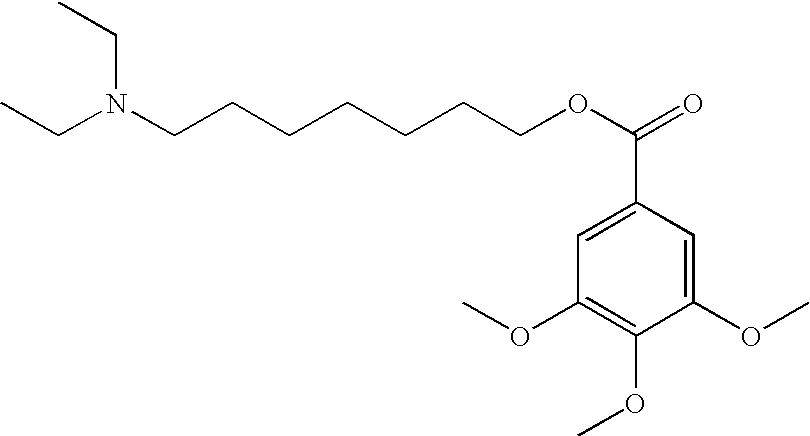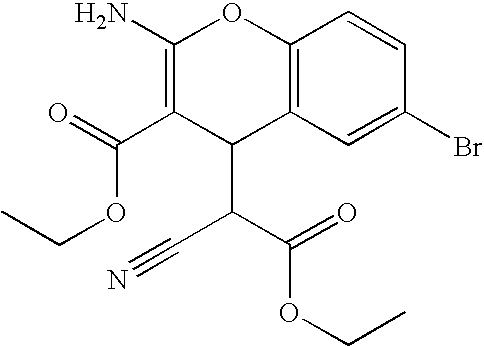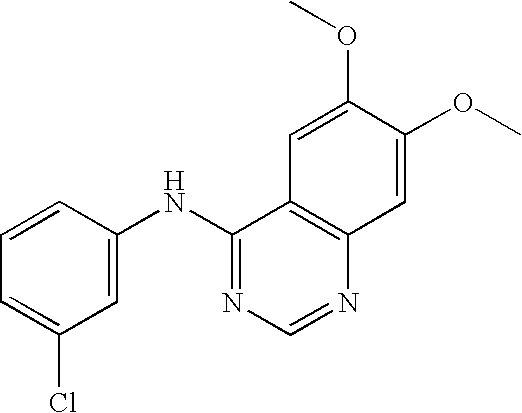Small molecules that reduce fungal growth
a small molecule and growth technology, applied in the direction of biocide, phosphorous compound active ingredients, peptide/protein ingredients, etc., can solve the problem of difficult identification of novel anti-fungal targets, and achieve the effect of reducing the growth of a fungus
- Summary
- Abstract
- Description
- Claims
- Application Information
AI Technical Summary
Problems solved by technology
Method used
Image
Examples
example 1
[0178] We provide numerous small molecules that inhibit either cell growth or the yeast-to-hyphal transition of the pathogenic yeast Candida albicans. These molecules have been identified from the ICCB / Harvard University Bioactive Knowns Collection. Analysis of the wide range of well-studied molecules in this collection has allowed us to systematically examine a variety of proteins and signaling pathways for their involvement in the budded-to-hyphal-form transition. For the screen, C. albicans cells were grown in YNB media that inhibits hyphal growth and then transferred to 384-well optical plates containing Spider media to induce the budded-to-hyphal transition and hyphal elongation. Next, small molecules were assayed for their ability to inhibit the Spider media-induced hyphal growth. Screening occurred on an inverted Nikon microscope with a computer driven XY stage with DIC / Hoffman optics, digital SPOT® camera and automatic shutter. Pictures were automatically taken of each well ...
example 2
[0181] Cultures of Candida albicans were grown as described in Toenjes K. A. et al. (Antimicrobial Agents and Chemotherapy, 49(3):963-972, 2005). To induce hyphal growth, stationary-phase cultures were diluted into 5 ml of either YPD (1% yeast extract, 2% peptone, and 2% dextrose) plus 10% (vol / vol) fetal calf serum, Spider medium, Lee's medium (Lee, K. et al., Sabouraudia, 13:148-153, 1975), or M199 pH 8 medium (Sigma-Aldrich, St. Louis, Mo.) and grown at 37° C. with shaking at 250 rpm.
[0182] Quantification of inhibition of the budded-to-hyphal-form transition was accomplished by counting the numbers of individual budded cells versus the number of hyphae in the population. More than 100 cells were counted for each assay in duplicate and all assays were repeated four times. Individual hyphae were counted as one cell, although the hyphae usually consisted of multiple individual hyphal cells. The percentage of hyphae reported was normalized to the percentage of hyphae formed when no ...
PUM
| Property | Measurement | Unit |
|---|---|---|
| resistance | aaaaa | aaaaa |
| elongation | aaaaa | aaaaa |
| microscopy | aaaaa | aaaaa |
Abstract
Description
Claims
Application Information
 Login to View More
Login to View More - R&D
- Intellectual Property
- Life Sciences
- Materials
- Tech Scout
- Unparalleled Data Quality
- Higher Quality Content
- 60% Fewer Hallucinations
Browse by: Latest US Patents, China's latest patents, Technical Efficacy Thesaurus, Application Domain, Technology Topic, Popular Technical Reports.
© 2025 PatSnap. All rights reserved.Legal|Privacy policy|Modern Slavery Act Transparency Statement|Sitemap|About US| Contact US: help@patsnap.com



